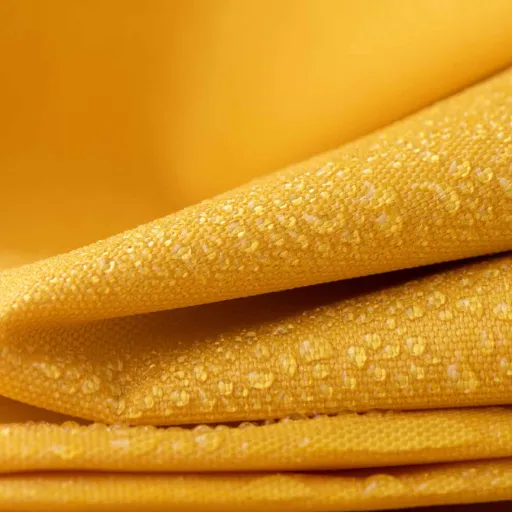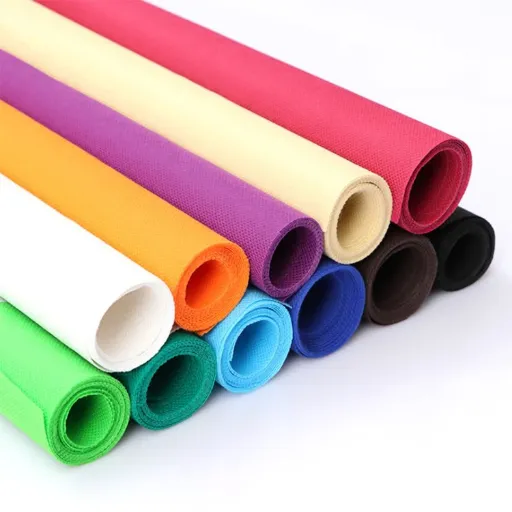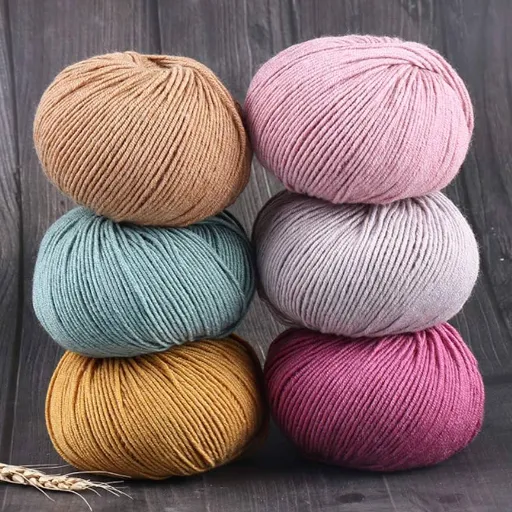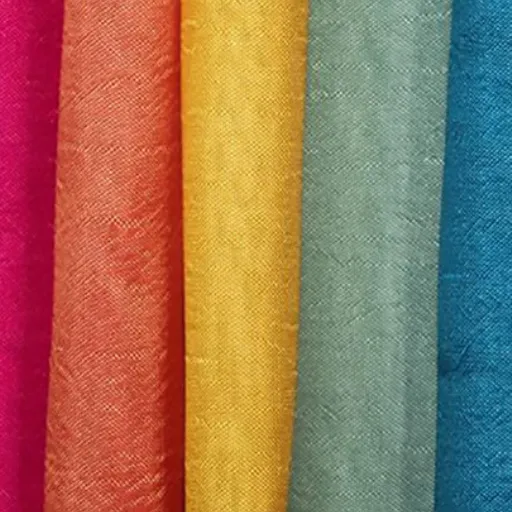Nylon fiber being a revolutionary material has indeed changed the very fabric of the textile industry since its inception of it. Fortified with strength, resilience, and versatility, nylon finds its way into a plethora of applications-from a stylish outfit to something more technical and industrial. But what makes nylon fabric so special? This blog post truly dives into the characteristics and properties of Nylon, unraveling all about its uniqueness and tries to find out why manufacturers and consumers alike have always placed a fondness for it. For the inquisitive reader, textile enthusiast, or professional in the field, the article is bound to throw a little light upon the durability, performance, and innovative potential that is nylon fabric. Now get ready for some exciting gangway lined with science, versatility, and everyday usage of nylon fiber!
Introduction to Nylon Fibers

History and Development of Nylon
Nylon fibers are the creation of the twentieth-century era, mainly responding to the growing demand for synthetic fibers. Nylon became the first synthetic fiber made entirely of petrochemicals, symbolizing a revolutionary paradigm shift in textile production. The researchers aspired to produce a cheap and durable alternative to natural fibers like silk; with polymer chemistry as the focal point, they succeeded. Nylon is a fiber reputed to be strong, elastic, and tremendously versatile.
Nylon came into existence following the development of polyamide, essentially its base material. Medium-small chains are then allowed to grow long and strong through a polymerization process to provide nylon with its distinct characteristics. Nylon, when introduced in the consumer market, started with hosiery and fishing nets and soon uplifted the life and performance expectations of traditional materials. World War II witnessed the greatest boost to nylon innovation for parachutes, ropes, and other military applications.
After the War, nylon carved itself into a household name, a world unto itself in apparel, toys, and production. Cheap and weather-resistant, it could readily adapt to most uses-it was adopted everywhere. Today, ever-advancing technology keeps enhancing nylon application, its performance making it fit for composing brilliant sportswear, automotive parts, and green products eternal importance afforded to this material.
Types of Nylon Fibers
Nylon comes in several forms, with each having special characteristics for special uses. The most typical varieties of nylon fibers include:
- Nylon 6
Nylon 6 is a synthetic polymer opined to be excellent in strength, elasticity, and durability. It is produced by ring-opening polymerization and commonly used in textiles, carpets, and industrial goods. Recent statistics indicate that Nylon 6, due to its lightweight and covet-resistance characteristics, has become a standard material in producing sportswear and outdoor equipment. Thanks to some improving in recycling methods, Nylon 6 is produced via regeneration, thus making it environmentally friendly.
- Nylon 6,6
Nylon 6,6 is another popular variation, which, because of its high melting point and excellent resistance to heat and abrasion, proves superior to Nylon 6. It is applied in very aggressive environments, such as automotive parts, industrial machinery, and ropes. Studies show that for the properties of mechanical strength and rigidity, Nylon 6,6 is one of the selective marketed nylons for the manufacture of high-performance engineering products.
- Nylon 11 and Nylon 12
These are specialty types of nylon and are produced from renewable sources (castor oil), thus adding a sustainability factor. They allow lesser absorption of water and provide better chemical resistance. Therefore, they find many applications in flexible tubing, medical devices, and electrical components. The growing demand for biodegradable and greener materials has suddenly attracted interest in Nylon 11 and Nylon 12.
- Reinforced Nylon
Reinforced nylon may have additives such as glass or carbon fibers to improve tensile strength and thermal stability. It is widely used in automotive engineering, aerospace components, and 3D printing because of the greater structural integrity imparted to the material.
- High-Performance Nylons (HPNs)
HPNs are nylons designed to achieve high-performance levels. These nylons find applications in oil and gas, electronics, and high-tech machinery in need of materials able to withstand extreme environments. Recent developments in the field have seen the emergence of ultrahigh-strength and HPNs resistant to chemical hazards as materials suitable for state-of-the-art applications.
Different fiber types and their specialized applications demonstrate nylon’s evolution into a multipurpose material for all industries.
Overview of Nylon Fabric
Nylon fabric is a synthetic fiber derived from petrochemicals with durability, elasticity, and lightness among its distinguishing features. Starting from the 1930s onward, nylon was initially designed as an alternative to silk. Given its wonderful strength and versatility, the fabric presently finds myriad applications. Among the various places where nylon finds usage are apparel, accessories, industrial products, and sometimes even medical devices: one of the most versatile fabrics in the modern world.
The resistance to wear and tear is probably one of the most significant characteristics of nylon. The fabric is abrasion-resistant and quick drying, and it does wick away moisture, so it is made into outdoor equipment and active wear. Another attribute is high adaptability; nylon could be mixed with anything to boost another feature, like breathability or stretchability. They make nylon suitable for all sorts of environments: from a humid environment to high-stress industrial applications.
Just as nylon benefits people, it is bad for the environment. Being petroleum-based, the manufacturing of nylon consumes non-renewable resources and contributes to greenhouse gases. To reduce its environmental footprint, research for recycling nylon as well as for developing bio-based alternatives is ongoing. The purpose of these technologies is to restore balance between the world of utility nylon and the universe of sustainable practice, so that nylon can continue to be used in an environmentally conscious world.
Key Properties of Nylon

Tensile Strength of Nylon
Tensile strength in nylon, often dubbed as “excellent tensile strength,” is a property that illustrates the ability of the material to resist tension before rupture. This is the major property behind nylon being preferred in numerous applications, from textiles to industrial components. Its tensile strength varies between 6,000 and 12,000 psi, depending on the particular nylon and how it is made. Indeed, the high tensile strength ensures that any prepared nylon-based materials can endure various stress and deformation in quite unforgiving environments.
One of the reasons for the tremendous tensile strength is its molecular structure. Nylon polymers consist of very long chains of amide linkages forming an extraordinarily ordered, tightly bonded network. This configuration provides a framework for tension distribution within the substance so it has high resistance to breaking. Therefore, nylon is in products like ropes, fishing lines, and mechanical parts that must hold forth under huge loads without breaking down.
Another way tensile strength could be increased for nylon is by reinforcing materials or by blending one material with it. For instance, glass fibers or fillers could be added to enhance its toughness and stiffness while retaining the lightweight character. The performance of nylon in such applications truly demonstrates the reason for its continuing importance as a strong yet adaptable material in the material industries.
Elasticity and Flexibility
The highly valued characteristics of nylon are its elastic quality and flexibility, which combine to ensure a variety of applications. Elasticity is the property that allows nylon to return to its initial shape after stretching or deformation. This characteristic arises from its molecular constitution, as it consists of long polymer chains that can bear deformation and spring back physically without enduring permanent damage.
Another vital property is flexibility. It delineates the property of a material that allows it to bend without breaking or cracking factor chosen in applications where equipment or product involvement occurs through movement or stress-related issues. This flexibility of nylon can be credited to its semi-crystalline structure that possesses both amorphous and crystalline regions, which lend strength as well as pliability simultaneously.
Nylon’s elasticity and flexibility allow it to be manufactured into textiles, car parts, and industrial goods. These properties enable nylon to absorb impacts, resist tensions, and perform reliably in dynamic settings. This explains why nylon remains fundamental to maximum industries.
Abrasion Resistance
Nylon offers very good abrasion resistance, making it well-suited for demanding environments that tend to subject the material to friction, wear, and repeated use. The structure of the material offers such inherent strength against surface damage that other synthetic fibers cannot stand up to it in less challenging situations.
The abrasion resistance is mainly because of some basic molecular structure and its ability to resist damage when stressed. The resistance further increases the longevity of nylon products and guarantees performance when used in industrial belts, textiles, and mechanical components subjected to continuous use.
Nylon is considered abrasion-resistant, which translates to cost-saving in maintenance and the necessity for frequent replacements. This, combined with the emphasis placed on durability and performance in the industry, further extends its reach as an adaptable and dependable material.
Chemical Stability
Owing to exemplary chemical stability, nylon has been widely accepted in many harsher environments. The principle of stability rests upon a strong molecular structure that remains undegraded when procedures call for exposure to an agent of any kind. Resistance against degradation from oils, greases, and many common solvents ensures uniform performance in industrial applications.
An important aspect of chemical stability is nylon’s resistance to alkaline substances and weak acids. Such resistance allows its application in environments in which such chemicals can occur, like the manufacturing and automotive industries. However, one must also take into account that nylon may be impaired under exposure to strong acids or highly oxidizing agents.
Nylon performs well in fluctuating temperature environments. It boasts chemical and physical stability; hence, it does not warp or deteriorate easily under moderate thermal stress, reinforcing its stance as a durable material used in mechanical and industrial applications. All of these aspects highlight its dependability and versatility across a multitude of spheres.
Applications of Nylon Fibers

Textile Industry Use
In the textile industry, nylon fibers are revered for their ultimate strength, stretchability, and abrasion resistance. These qualities help prevent fabrics from wearing out from hard use so that they retain their aesthetic appeal and practical characteristics with the passage of time. The lightweight, flexible nylon fiber has found its presence in textile clothing and industrial textiles.
Hosiery, activewear, and swimwear are primary applications of nylon fiber in textile goods. These garments appear to stretch snugly for a close fit by virtue of fibers. Polyamide or nylon-fiber sportswear will not resist moisture and dries quickly, giving different uses a comfortable feel.
Besides apparel, nylon fiber is used in making industrial textiles such as ropes, nets, and parachutes. Their strength and abrasion resistance stand for durability and utmost efficiency in the application of very tough scenarios. The utility of nylon is further improved since it stands out, attuning developments like weaving and knitting that are found in numerous textile sectors, which thus prove versatile and indispensable.
Industrial Applications
Its very high tensile strength, flexibility, wear resistance, and industrial applications have given nylon the title of a critical industrial material. Its major purpose until nylon entered the market was ropes and nets that must be strong and durable. The building, fishing, and transport industries are almost giant consumers of nylon due to the demands imposed on their equipment by handling heavy weights and undertow.
Another major application has been the manufacture of parachutes, where human lives depend on performance and reliability. Lightweight parachutes are particularly useful since they impart resistance to abrasion and weathering, a fitting property for extra high-pressure applications. Examples of use in parachutes revea,l amongst others that it characterizes performance in areas where precision and reliability are required.
Furthermore, nylon fibers were advancing the technology to textiles like protective clothing, conveyor belts, and automobile parts. These materials can be woven, knitted, or molded to meet specific industrial applications. Discussing the versatility of nylon, it is imperative to consider it as a resource for innovation and efficiency across several industries.
Injection Molding and Other Uses
Injection molding plays a critical role in the application of nylon across various industries. Nylon granules are melted by heating and injected into molds to produce durable and very precise components. It is precisely useful to make parts for automotive and electronics and consumer goods. Because of its flexibility and good mechanical properties, nylon is preferred in manufacturing gears, housings, and complicated assemblies requiring high wear resistance.
Nylon is used for extrusion work in building fibers, films, and tubing beyond injection molding. Such products serve varying end uses, including packaging materials, carpets, and industrial filters. Being light and chemically resistant makes nylon a material of choice when the product would be subjected to harsh chemicals or an aggressive medium. This is a perfect balance of flexibility, rigidity, and low cost that engineers and designers look for in materials.
Thus, nylon’s recyclability along with its ability to be processed into advanced composites has led to some sustainable innovations being pursued. By using either recycled nylon or blends with other materials, industries manage to reduce waste and create some novel properties useful in their production processes. Such an approach holds nylon as a truly versatile and environmentally friendly resource in the new industrial world.
Comparative Analysis with Other Synthetic Fibers

Nylon vs. Polyester vs. Acrylic
Nylon is durable and flexible, polyester excels in moisture resistance, and acrylic is preferred for warmth and softness.
| Parameter | Nylon | Polyester | Acrylic |
|---|---|---|---|
| Durability | High | Moderate | Moderate |
| Flexibility | High | Low | Low |
| Moisture Wicking | Moderate | High | Low |
| Warmth | Moderate | Low | High |
| Softness | Moderate | Low | High |
| Cost | Moderate | Low | Moderate |
| UV Resistance | Low | High | Moderate |
| Sustainability | Recyclable | Recyclable | Limited |
| Common Uses | Apparel, Rope | Sportswear, Bags | Sweaters, Rugs |
Strengths and Weaknesses of Nylon
Since nylon is a synthetic fiber, it finds its uses across many industries because of its particular set of properties. Its advantages and disadvantages are discussed in detail below, along with some figures for a better visual understanding:
Advantages
- ✓ Strength-Durability
High strength and durability stand out as one of nylon’s features. Nylon has a tensile strength that exceeds the strength of many industrial and natural fibers. For that reason, applications in which high durability of the product is needed, such as ropes, industrial belts, and outdoor gear, are best served by nylon. Tests show that nylon can resist very high stretching stress before its breaking threshold, its tensile strength being about 75 MPa.
- ✓ Flexibility
Another important feature of nylon fiber is of flexibility. It allows nylon materials to be stretched and will snap back to their original shape, a paramount property, especially in activewear, hosiery, and elastic goods.
- ✓ Light in Weight
Even though it is strong, nylon is quite light. This quality has contributed to its use in the manufacture of consumer goods such as bags, parachutes, and luggage.
- ✓ Abrasion and Wear Resistance
The nylon fiber stands somewhat higher-wearing and abrasion-resistant than many synthetic and natural fibers. Hence, it finds prime application in carpets and upholstery.
- ✓ Moisture-Resistant
Nylon absorbs water in a very small amount; however, it dries very quickly and retains its strength when wet. Such an attribute makes it appropriate for marine use, such as in fishing nets and ropes. Moisture regain values for nylon are generally low, about 4 percent under standard conditions.
- ✓ Recycling Capability
Due to increasing environmental issues, nylon has been the subject of many recycling efforts, particularly with nylon-6, which can be easily broken down and reprocessed. Instances of recyclable nylon include Econyl, used in fashion and other sustainable products.
Weaknesses
- ✗ Low Resistance to UV
Fading under ultraviolet radiation for short periods is the first disadvantage of nylon. UV rays weaken nylon, losing the material’s strength while making it brittle. To maximize weathering resistance, UV treatment is applied in the production of outdoor applications, which increases its cost.
- ✗ Beaconed with Moderate Moisture-Wicking Capacity
Although water-resistant, such characteristics cannot adequately describe nylon when compared to polyester as far as wicking away sweat is concerned. This makes it unsuitable for tight sportswear in high-grade activities.
- ✗ Heat Sensitive
A melting point of 260°C (500°F) approximately is associated with nylon. Temperatures close to those pose a kind of heat radiation that destroys the characteristics of nylon, thus limiting its use where heat resistance is needed.
- ✗ Environmental Effects
Virgin nylon production, though recycling potential from it, is an environmentally expensive process. Production utilizes petrochemicals and thus releases a tropospheric contaminant. As an illustration, it is said that for every kg of Nylon-6 produced, about 9.48 kg of CO2 equivalent is released into the atmosphere.
- ✗ Cost
Nylon is generally costlier than polyester and other synthetics, mostly in cases where advanced processing or recycling is in demand.
Industry continues innovating and adapting nylon to both traditional and sustainable uses by building on its strengths and minimizing its weaknesses.
Future Trends in Nylon Fiber Development

Innovations in Nylon Production
Recent years have brought about rapid advancement in nylon production under the impetus of requiring an environmentally friendly production process and efficiency. Certainly, one area of innovation concerns producing a bio-based nylon for which the starting materials consist of renewable resources such as vegetable oils or biomass instead of petroleum-based ones. Hence, the process of thinking is put in tandem with its own environmental impacts-the approach blocks one from adding more greenhouse gases to the atmosphere, which the traditional nylon production system has done so much in the past.
Another noted innovation embraces advanced recycling methods. Chemical recycling technologies operate to dissolve used nylon back into its monomers so that these monomers might further be used in making high-grade nylon fibers. By considering this, the waste is minimized, while the usage of synthetic materials is prolonged; hence, this is a process toward the circular economy. Furthermore, improvements are being made in mechanical recycling so that it may counter a broader array of nylon products as well, in doing so easing the demand for virgin materials.
Energy-efficient methods of production were also instituted in nylon manufacturing to lessen its carbon footprint; some of these are manufacturing using low polymerization temperatures and setting up factories that utilize renewable energy sources. The combination of innovation in materials, sustainable recycling, and energy-saving techniques is perhaps the biggest step toward achieving sustainability in nylon manufacturing.
Sustainability and Environmental Impact
Sustainability in nylon works to reduce the environmental impact associated with its production and life cycle. Nylon traditionally had a petroleum route, having been the single most significant contributor of GHG emissions. Advances in recycling have allowed nylon to be made from pre-consumer and post-consumer waste, such as discarded fishing nets and industrial waste. Such recycling prevents wastes from polluting ecosystems and simultaneously lessens the demand for virgin material and hence downscales the emissions generated through primary production.
Energy consumption is one other consideration in the environmental impact of nylon. The application of high temperatures and complex processes during nylon manufacturing consumes significant amounts of energy. Production methodologies with energy efficiency, including low polymerization temperatures and energy from renewable sources, are, however, lessening the carbon footprint of nylon manufacture. Then goes away into myriad large processes.
Despite the advancements, some challenges remain. Nylon is not yet considered biodegradable, and landfill persistence can stretch into decades, during which it tends to contaminate soil and water. Thus, in resolving the matter, it is imperative that recycling infrastructure be encouraged and investment promoted towards biodegradable alternatives. In the search for such materials, both researchers and manufacturers work persistently for materials that possess the properties of nylon but are environmentally benign. These efforts will ensure a sustainable future for textiles and will help lessen the larger environmental on synthetic materials.
Emerging Applications
Sustainable and biodegradable materials, when applied in textiles, operate across various industries to lessen environmental impact. One of the major avenues for these eco-landscaping textiles is the fashion industry, producing apparel that balances style and sustainability. The materials are meant to degrade naturally and environmentally, so landfill waste is minimized. Further developments in fabric science ensure that the textiles are durable and comfortable for everyday wear.
Another phrase that fulfills an important role in industrial textiles is sustainable materials replacing synthetic counterparts in the sectors of construction, agriculture, and transportation. For instance, biodegradable textiles are employed in geotextiles to arrest erosion and use these as sustainable coverings for crops that eventually retreat into the drinkable soil. This would evolve their application into less dependence on synthetic materials and, simultaneously in some way forming a circular economy where the lifecycle of these products is in synchronization with environmental health.
Lastly, the implementation of biodegradable materials now extends to the production of disposable items such as hygiene products and medical textiles. Biodegradable wipes, sutures, and wound dressings are all devoid of tried-and-tested solutions for the pollution that stems from single-use products. Bringing sustainability into these disposable items therefore aids in waste reduction while guaranteeing an extra measure of performance and hygiene. Continuous research, development, and integration of these materials form a hopeful awakening in the textile industry that grants strong weightage to environmental preservation.
Frequently Asked Questions (FAQ)
Q: What are the main characteristics of the nylon fiber?
A: High tenacity, elasticity, resistance to abrasion are some qualities of nylon fiber. Being strong and durable, the fiber is used for various applications, among them making nylon stockings and other textile products.
Q: How is nylon formed?
A: Nylon is formed by polymerizing certain chemicals, mainly adipic acid and hexamethylenediamine, to obtain nylon salt, which is next converted into nylon resin by heating and extrusion.
Q: What are the types of nylon available?
A: Various kinds of nylon exist, with nylon 66 and nylon 510 being the most common. All types have properties that are suitable for particular applications, i.e., fibers of high tenacity for industrial textiles and reinforced nylon for increased strength.
Q: What are the physical properties of nylon fiber?
A: This consists of the physical properties such as being lightweight, possessing high tensile strength, and resisting moisture absorption. These properties have made nylon very versatile in clothing, ropes, and other dry goods.
Q: What is significant about glass transition temperature for nylon?
A: It is an important quality to take into consideration because it is the temperature range in which nylon turns from a hard, brittle material to a rubber-like material. Depending on these glass transition temperature-related mechanical properties, nylon can be made useful for different temperature-based applications.
Q: How does moisture-wicking operate in nylon?
答:尼龙纤维具有吸湿排汗性能,能将水分从皮肤表面吸走,从而保持穿着者干爽舒适。因此,吸湿排汗性能优异的Polo衫和尼龙袜成为运动爱好者的首选。
Q: Can other fibers be blended with nylon?
A: Yes; nylon can be blended with some fibers, such as spandex, to impart specific properties. When nylon is blended with spandex, fabrics have the ability to stretch and stay flexible; hence the stretching fabrics are being used for tight-fitting clothes.
Q: What about nylon in its chemical properties?
A: Nylon shows properties that make it resistant to many chemicals, oils, solvents, and so on. Hence, nylon, because of this property, finds many industrial applications, including the making of Nylon parts that require the properties of durability and chemical resistance.
Q: What was the first nylon created and why is it important?
A: Nylon 66 was the first nylon ever created, which became a very famous landmark in the history of synthetic polymers. Because of its high strength and versatility, it lay the foundation for building almost all applications and products of nylon that we use today.
References
- TVF Inc. – Characteristics of Nylon – Highlights nylon’s smoothness, strength, durability, and lightweight nature compared to polyester.
- Xometry – 7 Properties of Nylon – Explains nylon’s properties, including elasticity, strength, moisture resistance, and resiliency.
- Sewport – What is Nylon Fabric – Provides an overview of nylon fabric, its composition, and the different types of nylon.
- Quora – Characteristics of Nylon Fabric – Discusses nylon’s lightweight, strength, abrasion resistance, and quick-drying features.
- Volt Plastics – Advantages of Nylon – Covers nylon’s toughness, heat and chemical resistance, durability, and cost-effectiveness.




















